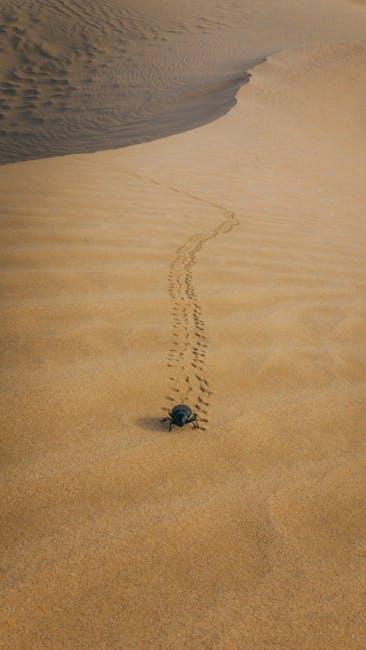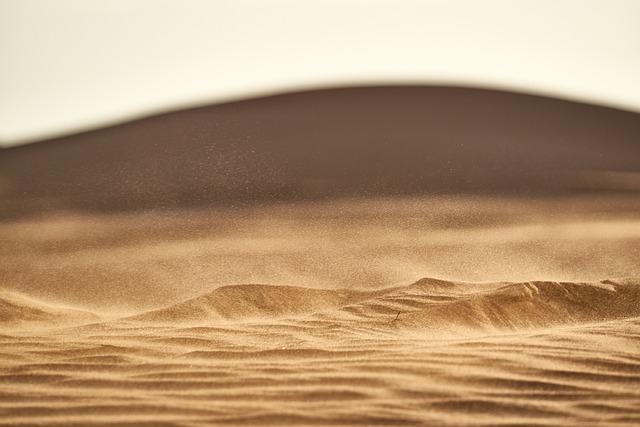In the vast, sweeping deserts of Arrakis, where colossal sandworms burrow beneath shifting dunes, the world of “Dune” unfurls in a mesmerizing blend of reality and imagination. Bringing Frank Herbert’s iconic universe to the silver screen demanded more than just visionary storytelling; it required a seamless fusion of practical effects and cutting-edge CGI. This intricate dance between tangible craftsmanship and digital wizardry not only captured the epic scale and intricate details of the narrative but also breathed life into a world where science fiction and visual artistry converge. Join us as we delve into the creative alchemy behind “Dune,” exploring how filmmakers harnessed both tradition and technology to transform a legendary tale into a cinematic masterpiece.
Crafting the Sands: The Art of Practical Effects
In the cinematic journey of Dune, the seamless blend of practical effects and cutting-edge CGI brought the arid landscapes and colossal sandworms to life. Practical effects artists crafted intricate models and tangible environments that provided actors with a genuine sense of scale and atmosphere. This tactile approach not only enriched the visual authenticity but also grounded the fantastical elements in reality.
- Miniature Models: Used to create detailed cityscapes and landscapes, providing a realistic backdrop for CGI enhancements.
- Sand Simulations: Real sand was manipulated to mimic the shifting dunes, adding a layer of realism that digital effects alone couldn’t achieve.
- Costume and Set Design: Utilized traditional techniques to craft the unique attire and architecture, contributing to the film’s immersive world-building.
The collaboration between practical effects and CGI ensured that each scene was a harmonious blend of innovation and tradition, captivating audiences with a world that felt both alien and familiar.

Digital Magic: Harnessing CGI to Enhance the Dune Universe
The vast and intricate universe of Dune was vividly brought to life through a seamless blend of practical effects and the digital wizardry of CGI. This fusion allowed filmmakers to transcend the limitations of physical sets, crafting expansive desert landscapes and the iconic sandworms with remarkable realism. CGI technology was instrumental in enhancing the visual grandeur, enabling the creation of sweeping vistas and dynamic action sequences that were previously unimaginable.
Key elements of CGI’s contribution include:
- Realistic Sand Dynamics: Simulating the shifting sands of Arrakis with unparalleled detail.
- Creature Design: Bringing the colossal sandworms to life, ensuring their movements felt natural and imposing.
- Environmental Enhancements: Extending practical sets into vast digital landscapes, enriching the atmospheric depth.
By blending these digital elements with tangible props and sets, the filmmakers ensured that Dune’s world felt both immersive and authentic, capturing the imagination of audiences worldwide.

Seamless Integration: Merging Practical and Digital Worlds
In the cinematic adaptation of “Dune,” filmmakers achieved a breathtaking harmony between the tangible and the virtual, weaving together practical effects and CGI to create an immersive universe. The barren, expansive landscapes of Arrakis were brought to life with a combination of real-world locations and digital artistry. Practical sets provided actors with a tactile environment, allowing performances to resonate with authenticity, while CGI enhanced these settings, adding layers of depth and otherworldly elements.
- Practical Sets: Monumental sand dunes and elaborate costumes grounded the film in reality.
- CGI Enhancements: Seamlessly integrated digital elements, such as the colossal sandworms, elevated the visual experience.
- Hybrid Techniques: A blend of both worlds ensured a visually cohesive and believable narrative.
This fusion of techniques not only enriched the storytelling but also honored the intricate details of Frank Herbert’s vision, capturing the essence of a world where the extraordinary feels tangibly real.

Expert Insights: Lessons from the Dune Effects Team
In the making of Dune, the effects team deftly blended practical effects with cutting-edge CGI to create a visually stunning experience. Paul Lambert, the film’s VFX supervisor, shared insights into their approach, emphasizing the importance of grounding the fantastical elements in reality. By constructing intricate physical models and using real-world locations, the team ensured that the digital effects felt authentic and immersive.
- Practical Effects: Miniatures of the massive sandworms were crafted to capture realistic textures.
- CGI Enhancements: Digital techniques were used to animate these models, adding fluidity and life.
- Seamless Integration: Careful attention was given to lighting and shadows to blend CGI with practical shots.
The collaboration between departments fostered a creative synergy, allowing the team to push the boundaries of visual storytelling. By merging traditional and modern techniques, Dune emerged as a benchmark for future cinematic endeavors.

